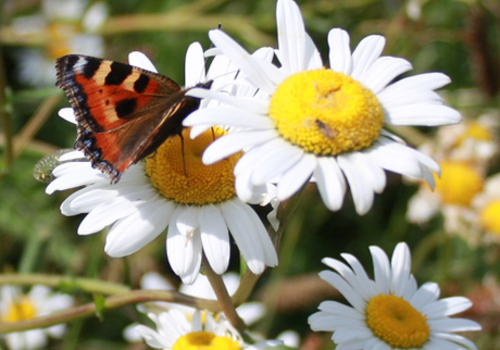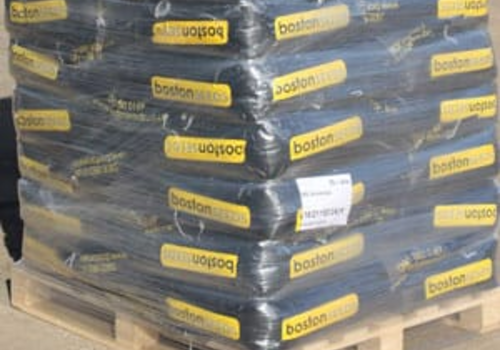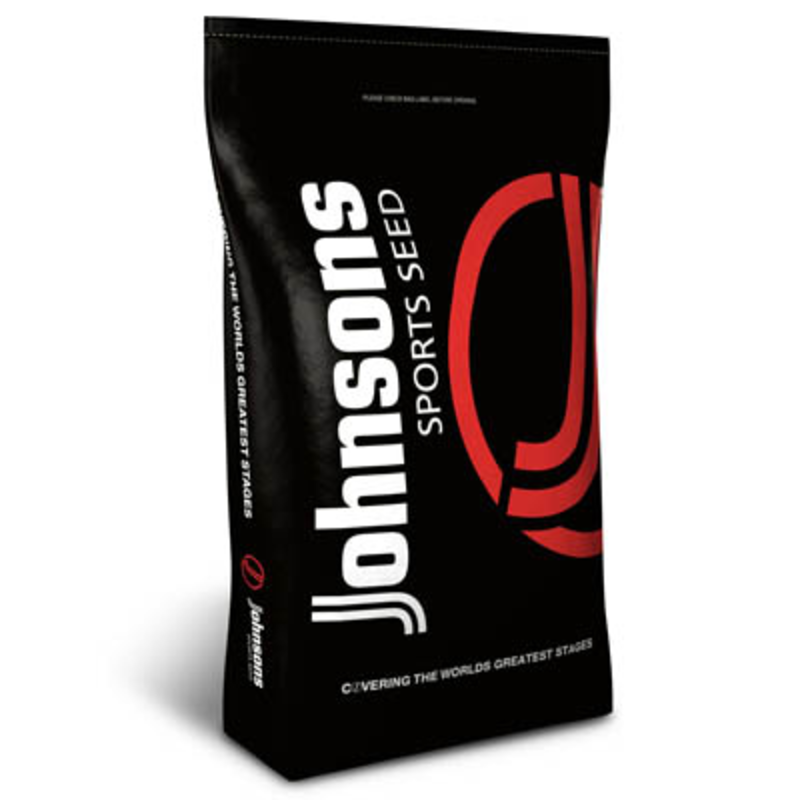Johnsons J Fescue Grass Seed
Johnsons J Fescue is the UK's most exclusive ryegrass-free grass seed for greens, tees and fairways, delivering sustainable high performance surfaces with low input requirements for water or fertiliser. Trusted by top golf clubs. Choose J Fescue for your fairways and sustainable greens, or for a sustainable, low-input fine-leaved lawn.
- Contains: 50% slender creeping red fescue (3 varieties selected for year-round colour, close-mowing suitability and tolerance to drought) and 50% chewings fescue (3 varieties selected for visual merit and shoot density).
- Treated with GroMax to accelerate healthy germination and establishment.
- Ryegrass-free blend for a sustainable sward all year round.
- Sow at 35 grams per sq/m - 20kg covers 575 sq/m.
- For best results, use with our pre-seeding fertiliser and a spreader.
Mixture Specification
● 20% NEW Sybille [Slender Creeping Red Fescue]
No.1 rated for close mown turf, exceptional shoot density and disease resistance.
STRI Rating 8.4
● 15% Seroa [Slender Creeping Red Fescue]
High visual merit, combined with high density and excellent salt and drought tolerance.
STRI Rating 7.5
● 15% Cezanne [Slender Creeping Red Fescue]
Versatile fine fescue with excellent salt tolerance. Outstanding winter colour and ability to perform in cold temperatures.
STRI Rating 7.3
● 20% Bogart [Chewings Fescue]
Excellent shoot density under close mown conditions combined with visual merit and high disease resistance.
STRI Rating 7.6
● 15% Orionette [Chewings Fescue]
Very high density and persistency to keep weeds at bay, while remarkable Red Thread tolerance ensures low N input.
STRI Rating 7.6
● 15% Siskin [Chewings Fescue]
Highly ranked for disease resistance, salt tolerance and visual merit even under low input management.
STRI Rating 6.7
FAQs
What type of lawns or turf is Johnsons J Fescue best suited for?
Johnsons J Fescue is designed for high-quality lawns where a clean, consistent finish is important. It’s most often used on ornamental turf, golf tees, bowling greens, and formal lawns that are cut short and regularly maintained. The mix includes fine fescue varieties that produce a dense, upright sward with great colour and texture. It’s not built for heavy footfall, but if you’re after a refined, low-growing surface that holds its shape and looks smart year-round, it’s a solid choice for both professionals and dedicated lawn owners.
Can this fescue mix be used for shaded lawns or partial shade?
Yes, it works well in partial shade. Both Chewings Fescue and Slender Creeping Red Fescue — the main components in the mix — cope well with lower light levels, making this a good option for areas under trees, beside fences, or near buildings where sunlight is reduced. While it’s not a solution for deep shade, it performs noticeably better than ryegrass-based mixes in dappled light or patchy sun. As long as there’s some daylight, you’ll still get a thick, tidy lawn without the bare spots you might see from other seed types.
How quickly does Johnsons J Fescue establish?
Under the right conditions, germination starts in 7 to 14 days, and the lawn should begin to fill out within 3 to 6 weeks. That depends on temperature, moisture, and how well the area was prepared. Cooler weather will slow it down a bit, while consistent watering helps things move faster. It’s slower to get going than ryegrass mixes, but it’s much finer and more consistent once it’s settled in. Just keep off the area until the roots have taken and wait until it reaches cutting height before mowing.
How low can Johnsons J Fescue be mown?
It’s built to be mown short to as low as 5mm if needed without losing colour or density. That’s what makes it so well suited to ornamental lawns and fine turf areas. You don’t need to go that short, but it’ll hold up if you do. Start with a higher cut while the lawn is establishing, and drop gradually once it’s mature. Regular mowing helps tighten the growth pattern and gives it that manicured look, especially when done with sharp blades and a bit of care.
What’s the best time of year to sow this mix?
Spring and early autumn are ideal. Aim for temperatures above 10°C with some rain in the forecast to give the seeds a strong start. Autumn sowing lets the roots establish before winter, while spring sowing benefits from longer days and rising warmth. Both seasons work well as long as the soil is warm enough and you can keep it moist. Avoid sowing in the middle of summer unless you can water regularly, as new seedlings are vulnerable to drying out before they’ve fully established.
Is this seed mix suitable for drought-prone areas?
Yes. It’s a good performer in drier conditions. Hard Fescue and Slender Creeping Red Fescue are both naturally drought-tolerant, which means the mix holds up better than many others when water’s in short supply. Once established, it can survive long periods without rain and doesn’t need constant watering to stay green. That makes it ideal for areas where irrigation is limited or where a lower-maintenance option is needed. It won’t stay lush in a full heatwave, but it recovers quickly when rain returns.
Buy With Confidence





